Search / “15 Reasons Spring Weather Is So Unpredictable”
Matching Newsitems
-
-

MTB events calendar filling up
- Wellington Mountain Bike Club
- The summer's race calendar is filling up.
- Accepted from WMTBC feed 2024 by feedreader
- Automatically tagged as:
- mountain-biking
-
-
-
DARLING, LOVER, FREAK
- Black Coffee
- Jade Weaver is a Wellington based Artist.
- Accepted from Black Coffee exhibitions by feedreader
- Automatically tagged as:
- cafes
- newtown
- exhibitions
Black coffee, Riddiford Street, Newtown, Wellington, Wellington City, Wellington, 6021, New Zealand (OpenStreetMap)
-
-
-

200 trees by the bees: first volunteers' planting session
- Energise Ōtaki
- Ōtaki Carbon Forests is on the up.
- Accepted from Energise Ōtaki feed 2024 by tonytw1
- Not tagged
-
-
-
Climate Action Fund Open!
- Wellington Community Fund
- WCT’s Climate Action Fund is now open.
- Accepted from WCT news by feedreader
- Automatically tagged as:
- community-groups
-
-
-

2021 – the year ahead
- Eye of the Fish
- Phew – thank goodness that 2020 is over.
- Accepted from Eye of the Fish feed by tonytw1
- Automatically tagged as:
- architecture
- blogs
-
-
-
Christopher Tubbs
- Newtown Festival
- Christopher Tubbs is a DJ and producer.
- Accepted from Newtown festival 2019 by feedreader
- Automatically tagged as:
- newtown
- events
- wcn-hosted
-
-
-
Together Tawa Celebrate Triumphant Summer
- College Sport Wellington
- Tawa College cricket is on a roll.
- Accepted from College Sport news HTTPS by feedreader
- Tagged as:
- tawa
Tawa, Wellington, New Zealand (OpenStreetMap)
-
-
-
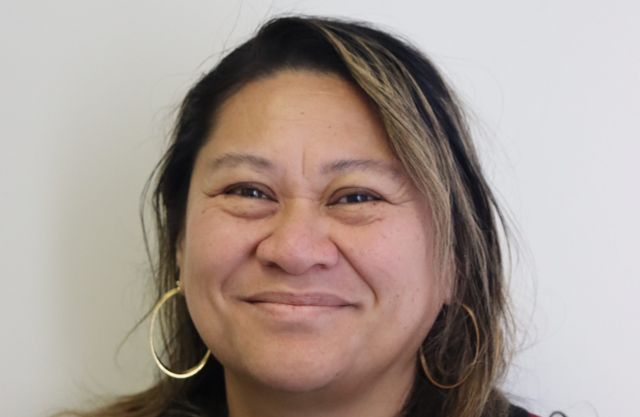
Welcome Vanessa – new Events Coordinator
- Age Concern Wellington
- Vanessa Lavatai is our new Events Coordinator.
- Accepted from Age Concern Wellington feed by feedreader
- Automatically tagged as:
- elderly
-
-
-
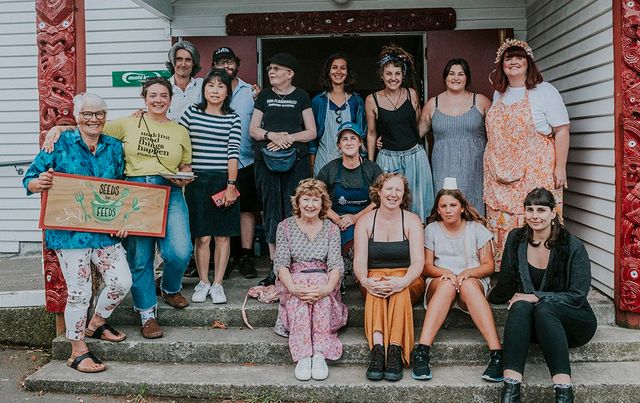
Newtown group hui : all welcome!
- Seeds to Feeds
- NEWTOWN WHANAU, this one is for you.
- Accepted from Events - Welcome to Seeds to Feeds by tonytw1
- Tagged as:
- newtown
Newtown, Wellington, Wellington City, Wellington, New Zealand (OpenStreetMap)
-
-
-

Ruby Esther Comedy Festher
- Bats Theatre
- Ruby Esther is uncomfortable. All the time.
- Accepted from Bats Theatre openings by feedreader
- Automatically tagged as:
- theatre
BATS Theatre, 1, Kent Terrace, Mount Victoria, Wellington, Wellington City, Wellington, 6011, New Zealand (OpenStreetMap)
-
-
-
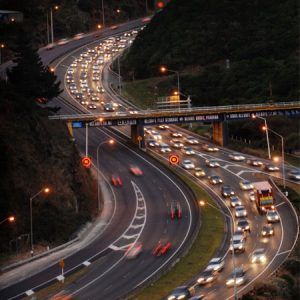
Wellington’s Huge Commuter Tide
- Wellington Commuter
- Wellington is an unusual city due to a huge portion of jobs being in the CBD We experience serious “tidal” congestion due to the huge morning inflow of commuters into the CBD and then out from CBD in the evening The peak time pressure on the Golden Mile is huge but otherwise Wellington is quite an accessible city One could rightly say that every city is different but, on the spectrum of city characteristics, Wellington City is unusual in a number of ways.… Read more ...
- Accepted from Wellington Commuter feed by tonytw1
- Automatically tagged as:
- blogs
- transport
-
-
-
BREAST CANCER PATIENT RESEARCH – interview participants sought
- YWCA of Wellington & Hutt Valley
- Research for comparison of breast cancer patients’ perceptions and experiences of private and public health systems in New Zealand is underway. Masters student Kim Dobson from Victoria University of Wellington is undertaking which is exploring Breast Cancer patients’ perceptions and experiences of health sectors in New Zealand.
- Submitted by tonytw1
- Tagged as:
- health
- womens
-
-
-
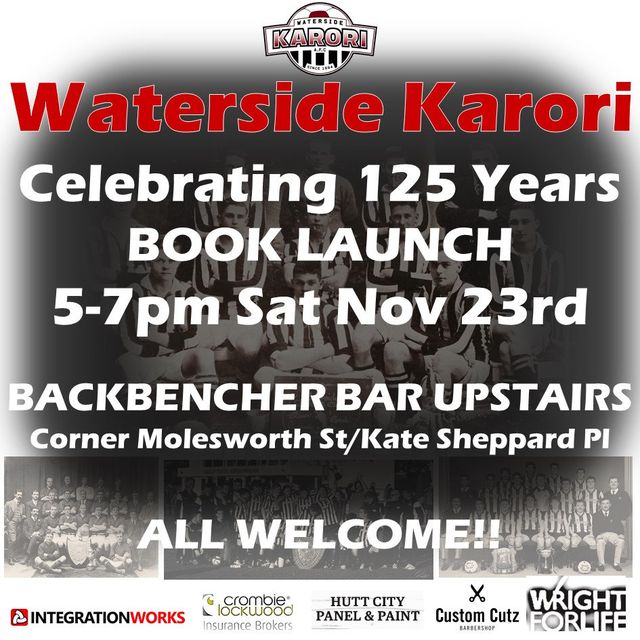
125th Anniversary Book Launch
- Waterside Karori
- We have a new date to save for the WKAFC Book Launch.It is Saturday Nov 23rd. It is from 5-7pm at the Backbencher Bar (Upstairs). Use Kate Sheppard Place entrance.There is a Phoenix game that night at 7pm to attend, or stay on at the Backbencher.
- Accepted from Waterside Karori by feedreader
- Automatically tagged as:
- soccer
- karori
-
-
-
Market Night Friday 29 November
- Kilbirnie School
- Market Night is on Friday 29 November, 4.30 to 7pm. Spread the word amongst your friends, family and neighbours - this event is open to the public and is a great way to grab dinner and be part of the Kilbirnie School community. The more the merrier!
- Accepted from Kilbirnie School news by feedreader
- Tagged as:
- kilbirnie
Kilbirnie School, 72, Hamilton Road, Hataitai, Wellington, Wellington City, Wellington, 6021, New Zealand (OpenStreetMap)
-
-
-

125th Anniversary Book Launch
- Waterside Karori
- We have a new date to save for the WKAFC Book Launch.It is Saturday Nov 23rd. It is from 5-7pm at the Backbencher Bar (Upstairs). Use Kate Sheppard Place entrance.There is a Phoenix game that night at 7pm to attend, or stay on at the Backbencher.
- Accepted from Waterside Karori by feedreader
- Automatically tagged as:
- soccer
- karori
-
-
-
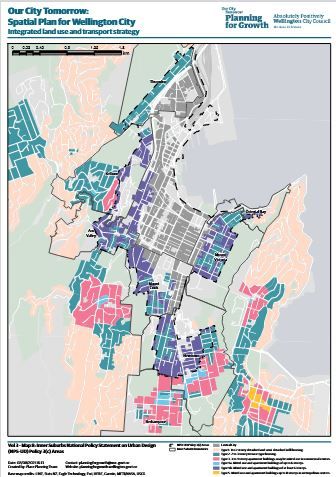
Six storeys in the suburbs
- Wellington Scoop
- Light Rail is the second option being put forward by Let’s Get Wellington Moving for mass transit. While it is better than bendy buses, it has diverged alarmingly from what was supported by all tiers of government in 2019. Most concerning is the thinking around the route.
- Accepted from Wellington Scoop features by feedreader
- Tagged as:
- lets-get-wellington-moving
- light-rail
-
-
-
Johnsonville: Proposed new bus stop on Moorefield Road
- Metlink
- GWRC is working with Stride and Wellington City Council (WCC) to develop a fully integrated bus and rail transport hub; this is likely to take some time to work through. In the interim, a new bus stop in Johnsonville, southbound on Moorefield Road is proposed - Stop D.
- Accepted from Metlink news by feedreader
- Tagged as:
- johnsonville
- buses
Moorefield Road, Johnsonville, Wellington, Wellington City, Wellington, 6037, New Zealand (OpenStreetMap)
-
-
-
The Mutton Birds live instore at Slow Boat!!!
- Slow Boat Records
- Good lord – what a marvellous event – hard to think of a more ‘Wellington’ thing than The Mutton Birds playing the song of the same name here at Slow Boat instore here on a Friday evening for a packed store full of deliriously happy fans, smack dab in the middle of their two sold-out shows at San Fran!!We were treated to a half-hour set of stone-cold classic songs like “Anchor Me”, “White Valiant” and my personal fave, “Like This Train” by this brilliant band – a pointed reminder of the way their music has lodged in our collective pyches – for which we are immensely grateful to the band, their management and crew, and genial soundman Bob – a wonderful, unforgettable moment in the store’s storied history, and one captured for posterity with some fine video clips (including this one https://www.facebook.com/159129047505886/videos/1317027751832660/, where I tragically dropped my phone part way thru…!!!)So – just wanted to say a huge thanks to everyone who made it down, and especially the band – Don, Dave, Alan and Ross – for giving your time and talent so generously – absolutely magical, spine-tingly stuff!!!Love on ya, XX The Slow Boat Crew XX
- Accepted from Slowboat posts by feedreader
- Tagged as:
- video
- music
- mens
- wellington
- art
Slow Boat Records, Cuba Street, Te Aro, Wellington, Wellington City, Wellington, 6040, New Zealand (OpenStreetMap)
-
-
-
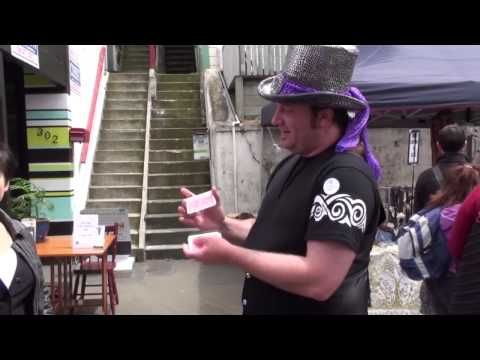
A fair to remember
- The Sidestrip
- The Thorndon Fair, organised by Thorndon School, is being held on 6 December 2009. It is noted as being Wellington’s oldest, biggest, brightest and best street fair.
- Tagged as:
- thorndon
- video
Thorndon, Wellington, Wellington City, Wellington, New Zealand (OpenStreetMap)
-
-
-
Kelburb Library Entrance Moving, September 10, 2012
- Victoria University Library
- The Kelburn Library entrance is moving down from level two to level one on September 10, 2012. Read more about how the Library is changing in 2012
- Accepted from Vic Library news
- Tagged as:
- kelburn
- libraries
Kelburn, Wellington, Wellington City, Wellington, New Zealand/Aotearoa (OpenStreetMap)
-
-
-
Kelburn Library Entrance Moving, September 10, 2012
- Victoria University Library
- The Kelburn Library entrance is moving down from level two to level one on September 10, 2012. Read more about how the Library is changing in 2012
- Accepted from Vic Library news
- Tagged as:
- kelburn
- libraries
Kelburn, Wellington, Wellington City, Wellington, New Zealand/Aotearoa (OpenStreetMap)
-
-
-
Jacinda Ardern — PM against the odds
- Victoria University of Wellington
- The Prime Minister's success is an important signal that Parliament is a place for young women, Victoria's Dr Claire Timperley tells the University's 11th Post-Election Conference.
- Accepted from VUW News feed
- Automatically tagged as:
- kelburn
- victoria-university
-
-
-
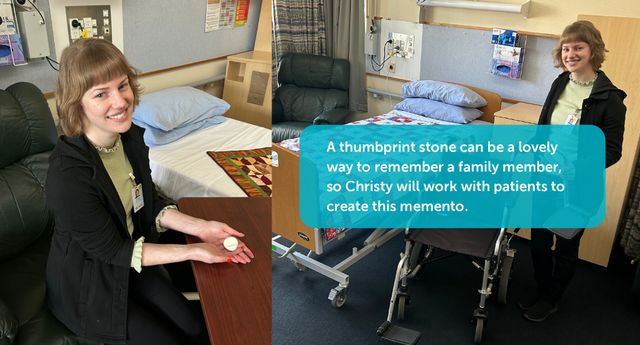
Part of the snapshot of someone’s life
- Mary Potter Hospice
- Keeping people safe and independent, and working with their strengths is Christy’s focus at Mary Potter Hospice. Christy is an occupational therapist in the Hospices – read more
- Accepted from MPH news by feedreader
- Not tagged
-
-
-
Restoring the Council Chamber
- Victoria University of Wellington
- "The University is committed to honouring our heritage and this restoration is another step in the ongoing Hunter building conservation programme," says chief operating officer Mark Loveard.
- Accepted from VUW News feed by feedreader
- Automatically tagged as:
- kelburn
- victoria-university
-
-
-

Demonstrating success
- Victoria University of Wellington
- For Bing Xue, the most exciting part of becoming one of the youngest professors in the Wellington Faculty of Engineering is showing her students what is possible.
- Accepted from VUW News feed by feedreader
- Automatically tagged as:
- kelburn
- victoria-university
-
-
-
Hate speech law a threat to democracy
- Victoria University of Wellington
- If the ability to say things that may offend is hindered, the contest of ideas is hindered as well, write Dr Michael Johnston and Dr James Kierstead.
- Accepted from VUW News feed by feedreader
- Automatically tagged as:
- kelburn
- victoria-university
-
-
-
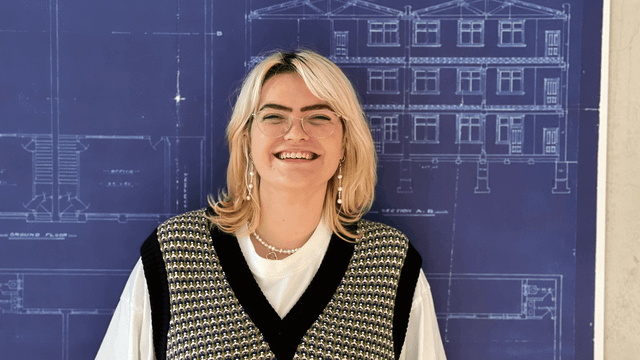
Advocating for the future of classical music in Aotearoa
- Victoria University of Wellington
- New Zealand School of Music alumna, law student, and clarinettist Leah Thomas is regularly asked if her law degree is her ‘back-up’. Her answer? Absolutely not.
- Accepted from VUW News feed by feedreader
- Automatically tagged as:
- kelburn
- victoria-university
-
-
-

The Weapons
- Hutt Valley Fencing Club
- Last but certainly not least, is the weapon of your choice. Within each discipline, there is much choice for a weapon, including size, weight, flexibility, and durability.
- Accepted from Hutt Valley Fencing Club feed by feedreader
- Not tagged
-
-
-

2024 d/Deaf and/or Disabled Artist Development Residency Announcement
- Toi Pōneke
- Toi Pōneke Arts Centre is pleased to announce that writer Helen Vivienne Fletcher is the recipient of its 2024 d/Deaf and/or Disabled Artist Development Residency.
- Accepted from Toi Pōneke Events by feedreader
- Automatically tagged as:
- toi-pneke
Toi Pōneke Arts Centre, Footscray Avenue, Mount Cook, Wellington, Wellington City, Wellington, 6040, New Zealand (OpenStreetMap)
-
-
-
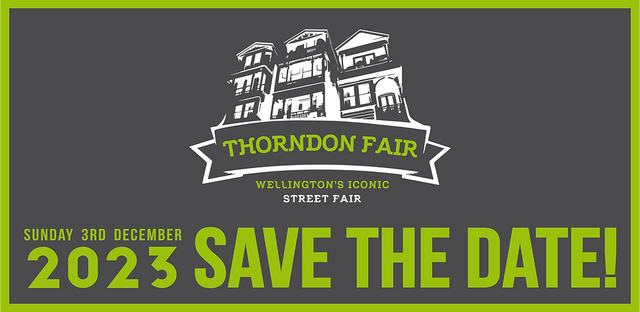
THORNDON FAIR / SAVE THE DATE!! 3rd December 2023
- Thorndon School
- THIS YEAR THE THORNDON FAIR IS ON SUNDAY THE 3RD OF DECEMBER FROM 10AM UNTIL 3PM. The fair is run by whanau of the school. We know...
- Accepted from Thorndon School feed by tonytw1
- Tagged as:
- thorndon
Thorndon School, Turnbull Street, Thorndon, Wellington, Wellington City, Wellington, 6140, New Zealand (OpenStreetMap)
-
- 1
- 2
- 3
- 4
- 5
- 6
- 7
- 8
- 9
- 10
- 11
- 12
- 13
- 14
- 15
- 16
- 17
- 18
- 19
- 20
- 21
- 22
- 23
- 24
- 25
- 26
- 27
- 28
- 29
- 30
- 31
- 32
- 33
- 34
- 35
- 36
- 37
- 38
- 39
- 40
- 41
- 42
- 43
- 44
- 45
- 46
- 47
- 48
- 49
- 50
- 51
- 52
- 53
- 54
- 55
- 56
- 57
- 58
- 59
- 60
- 61
- 62
- 63
- 64
- 65
- 66
- 67
- 68
- 69
- 70
- 71
- 72
- 73
- 74
- 75
- 76
- 77
- 78
- 79
- 80
- 81
- 82
- 83
- 84
- 85
- 86
- 87
- 88
- 89
- 90
- 91
- 92
- 93
- 94
- 95
- 96
- 97
- 98
- 99
- 100
- 101
- 102
- 103
- 104
- 105
- 106
- 107
- 108
- 109
- 110
- 111
- 112
- 113
- 114
- 115
- 116
- 117
- 118
- 119
- 120
- 121
- 122
- 123
- 124
- 125
- 126
- 127
- 128
- 129
- 130
- 131
- 132
- 133
- 134
- 135
- 136
- 137
- 138
- 139
- 140
- 141
- 142
- 143
- 144
- 145
- 146
- 147
- 148
- 149
- 150
- 151
- 152
- 153
- 154
- 155
- 156
- 157
- 158
- 159
- 160
- 161
- 162
- 163
- 164
- 165
- 166
- 167
- 168
- 169
- 170
- 171
- 172
- 173
- 174
- 175
- 176
- 177
- 178
- 179
- 180
- 181
- 182
- 183
- 184
- 185
- 186
- 187
- 188
- 189
- 190
- 191
- 192
- 193
- 194
- 195
- 196
- 197
- 198
- 199
- 200
- 201
- 202
- 203
- 204
- 205
- 206
- 207
- 208
- 209
- 210
- 211
- 212
- 213
- 214
- 215
- 216
- 217
- 218
- 219
- 220
- 221
- 222
- 223
- 224
- 225
- 226
- 227
- 228
- 229
- 230
- 231
- 232
- 233
- 234
- 235
- 236
- 237
- 238
- 239
- 240
- 241
- 242
- 243
- 244
- 245
- 246
- 247
- 248
- 249
- 250
- 251
- 252
- 253
- 254
- 255
- 256
- 257
- 258
- 259
- 260
- 261
- 262
- 263
- 264
- 265
- 266
- 267
- 268
- 269
- 270
- 271
- 272
- 273
- 274
- 275
- 276
- 277
- 278
- 279
- 280
- 281
- 282
- 283
- 284
- 285
- 286
- 287
- 288
- 289
- 290
- 291
- 292
- 293
- 294
- 295
- 296
- 297
- 298
- 299
- 300
- 301
- 302
- 303
- 304
- 305
- 306
- 307
- 308
- 309
- 310
- 311
- 312
- 313
- 314
- 315
- 316
- 317
- 318
- 319
- 320
- 321
- 322
- 323
- 324
- 325
- 326
- 327
- 328
- 329
- 330
- 331
- 332
- 333
- 334
3931 - 3960 of 10000
Matching websites
-
-
The Hutt Valley
- The Hutt Valley is home to unique visitor experiences and accessible outdoor recreation just 15 minutes from downtown Wellington City.
- Tagged as:
- tourism
- hutt-valley
-
-
-
WCC Transport Projects
- We’re investing in our transport network Find out about our planned transport projects and share your views so Wellington's transport network is safer and more convenient for everyone.
- Submitted by tonytw1
- Tagged as:
- consultation
- transport
- wellington-city-council
-
-
-
Young and hungry arts trust
- The Young and Hungry Arts Trust is a charitable organisation that was founded in 1994 in association with BATS Theatre. Young and Hungry arose out of a need to provide young people, aged 15-25 years, with opportunities to gain hands-on theatre experience within a professional structure.
- Submitted by tonytw1
- Tagged as:
- theatre
-
-
-
Flying Filing Squad
- We love filing (so you don't have to)
- Tagged as:
- business
-
-
-
Creative Mouse Design
- A design company with over 15 years experience in the field. Our expertise includes brand identity and development, web design, exhibitions, photography and much, much more.
- Tagged as:
- design
-
-
-
Young and Hungry
- Young & Hungry started life in 1994 at Bats theatre as a series of one act plays designed to give young people, aged between 15-25 years, the opportunity to partake in a professional theatre environment under the direction of professional theatre practitioners. Since then it has significantly grown and is now run by the Young and Hungry Arts Trust.
- Tagged as:
- performing-arts
-
-
-
Paul Michaels Wellington Wedding Photography
- Award winning photographer, inspired wedding images, stunning portrait and engagement pictures taken with fun and style. Your wedding is one of the most important days of your life, capture all the events in pictures that make your wedding so special.
- Tagged as:
- photography
-
-
-
Evans Bay Intermediate
- Evans Bay Intermediate is the only specialist provider of Education for Years 7 and 8 in the Eastern Suburbs. The school was opened in 1964 and has a roll of approximately 450 students. It caters for students in the Seatoun, Miramar, Kilbirnie, Lyall Bay areas with an ethnic mix of approximately 60% European, 12.5% Maori, 15% Asian, 9.5% Pacific Island.
- Tagged as:
- primary
- kilbirnie
-
-
-
Wellington Softball Association Inc.
- The Wellington Softball Association incorporates 15 clubs covering 79 senior and 91 junior teams within the following area Wellington City Porirua City and the Kapiti Coast District south of the Otaki River.
- Tagged as:
- softball
-
-
-
The Jackson Street Programme
- Jackson Street is a heritage icon, combining an eclectic mix of old buildings with funky cafés and boutique shopping. The retail strip boasts a huge variety of specialty shops, cafés, bars and restaurants that supply a wide range of ethnic foods, great coffee and goods not available anywhere else. The majority of shops are run by the owners, so the service is second to none!
- Tagged as:
- retail
- petone
-
-
-
Boulcott Street Bistro
- Our doors opened in 1991, since then we have been serving Wellingtonians innovative, modern food as well as some classics such as Lamb Shanks, Fillet Bearnaise and Creme Brulee. Reservations are accepted for lunch only. Dinner is casual dining so just come along and you will feel more than welcome.
- Tagged as:
- restaurants-and-bars
-
-
-
Learn English NZ
- Learn English NZ - Learn to speak and write English with homestay English tuition. Intensive one-to-one teaching for 10-15 hours per week. Stay in the seaside home of native English speaking, fully qualified teachers and combine learning and sightseeing
- Tagged as:
- education
-
-
-
Green Parrot Cafe
- My parents used to eat at the Green Parrot. So did their parents. And God knows my kids will probably eat there too.
- Tagged as:
- cafes
-
-
-
Newtown Festival
- This 10 day extravaganza will celebrate the diversity and vibrancy of Newtown, where so many cultures experience a real sense of place, belonging and community.
- Tagged as:
- newtown
- events
- wcn-hosted
-
-
-
The life and times of James Walter Chapman-Taylor
- ‘The life and times of James Walter Chapman-Taylor’ enables us to enter into the life and times of a man, a family, a society, and ways of thinking and acting different to, yet not so distant from, our own. We enter the world of an architect, who is also an artist; builder, craftsman; a theosophist, an astrologer, a photographer, a furniture maker.
- Tagged as:
- heritage-buildings
- art
-
-
-
East by West Ferry
- Experience the best of Wellington with a cruise out on the city's harbour ferry service. Up to 15 return scheduled sailings daily between Queens Wharf/Matiu Somes Island/Days Bay. Additionally in the weekends our new round Harbour Explorer Tours include stops at Petone, Seatoun, Days Bay, Matiu Somes Island & Queens Wharf.
- Tagged as:
- ferry
-
-
-
Verb Wellington
- Welcome to the Festival of Verb Wellington. We are so excited for all that we have in store Join us to celebrate people, stories, books, writers, readers and conversation!
- Submitted by tonytw1
- Tagged as:
- books
- community-groups
-
-
-
Sarah Free
- I started this site as a forum to discuss all sorts of things related to urban Wellington living, and so it will continue. I hope at least some people are finding it interesting and/or useful!
- Submitted by tonytw1
- Tagged as:
- people
-
-
-
Hutt Valley Concert Orchestra
- We are a community orchestra, based in the Hutt Valley of New Zealand. The 40 or so players come from a wide variety of occupations, but are united in their love of playing music in a full orchestra.
- Tagged as:
- hutt-valley
- music
- wcn-hosted
-
-
-
Greater Wellington Regional Council Have Your Say
- Have Your Say has been set up so that you, your family, friends and work mates can help shape the future direction of our region, and assist and guide us in making important decisions that affect our region.
- Submitted by tonytw1
- Tagged as:
- consultation
- regional-council
-
-
-
Wellington Volunteer Coastguard Inc
- The defining moment that so tragically expressed the need for a Life-Boat Service based in Wellington was the sinking of the 'Wahine' in Wellington harbour, 1968. This need was eventually met by the founding of this organisat
- Tagged as:
- emergency-services
- boating
-
-
-
Lower Hutt Amateur Athletic Club
- The Lower Hutt Amateur Athletic Club (LHAAC) caters for children aged 7-15 years. The 2006-07 season runs from 25th October to 15th March. Club nights offer a mixture of competition and coaching to enable children to gain the necessary skills to participate in a variety of running, jumping and throwing events. The club meets at the Hutt Recreation Ground on Wednesday nights from 6.00pm-7.30pm.
- Tagged as:
- hutt-valley
- athletics
-
-
-
A City for People
- Decades of inaction have meant house prices are out of control, while old rental properties rot out from underneath us. A whole generation of people are at risk of being forced out from the central city into new suburbs sprawling north, spending hours every day in traffic jams. We believe the Spatial Plan will allow Wellington to plan for the future so that new generations of Wellingtonians can share the city we love, and have a chance to live in a home that is affordable, accessible, healthy and warm.
- Submitted by tonytw1
- Tagged as:
- draft-spatial-plan
- housing
- lobby-groups
-
-
-
Yellow Fever
- Supporters of Wellington Phoenix FC. We dig our football. We think its brilliant Wellington has the A-League franchise. We know Wellington has a great football community and we know the city will get behind the team. So will we - and we'll have a bit of a lark along the way.
- Tagged as:
- soccer
-
-
-
Masala Restaurant
- Masala Indian Restaurant welcomes you to join us in central Wellington for the ultimate Indian dining experience.Our comfortable lounge style setting and warm atmosphere will ensure you a great night out on the Courtney Place Strip. We have a large restaurant so we can easily cater for both big group bookings or dinner for two.
- Tagged as:
- restaurants
-
-
-
Manawa Karioi Ecological Restoration Project
- Manawa Karioi Ecological Restoration Project is one of Wellington's oldest reforestation projects and is on land that is part of Tapu Te Ranga Marae in Island Bay.
- Submitted by tonytw1
- Tagged as:
- conservation
- island-bay
Te Ahi Ka - Loop Track, Island Bay, Wellington, Wellington City, Wellington, 6023, New Zealand (OpenStreetMap)
-
-
-
The Street City Church
- We're a group of everyday people who are trying to become the kind of church described in the Bible, where teaching is relevant, worship is real and lived-out everyday, friendships are honest, prayer is constant and compassionate care is given to those in need.
- Tagged as:
- religious-groups
-
-
-
Wakefield Hospital
- Wakefield Hospital is the largest private hospital in the Wellington region. It is located in the suburb of Newtown and along with Bowen Hospital is owned and operated by parent company Wakefield Health Ltd.
- Tagged as:
- hospital
- newtown
-
-
-
Glenside - the halfway
- Glenside is a suburb located between Wellington and Porirua, centrally located at the southern end of New Zealand's North Island. It is mainly rural zoned and is between the neighbouring communities of Johnsonville and Tawa on the old Porirua Road. Hills, streams and rural landscape characterise the area. The resident population is 336
- Tagged as:
- wcn-hosted
- porirua
- johnsonville
- community-groups
- tawa
-
-
-
Makara Hall and St Patricks Church
- Originally built in 1873 by the Catholic diocese, St Patricks is a non-denominational, community owned church. Situated in the farming and lifestyle area of Makara, St Patricks is twenty minutes drive from the centre of Wellington. The Church is listed with the Historic Places Trust and is lovingly maintained by local volunteers.
- Submitted by tonytw1
- Tagged as:
- heritage-buildings
- makara
- religious-groups
-

